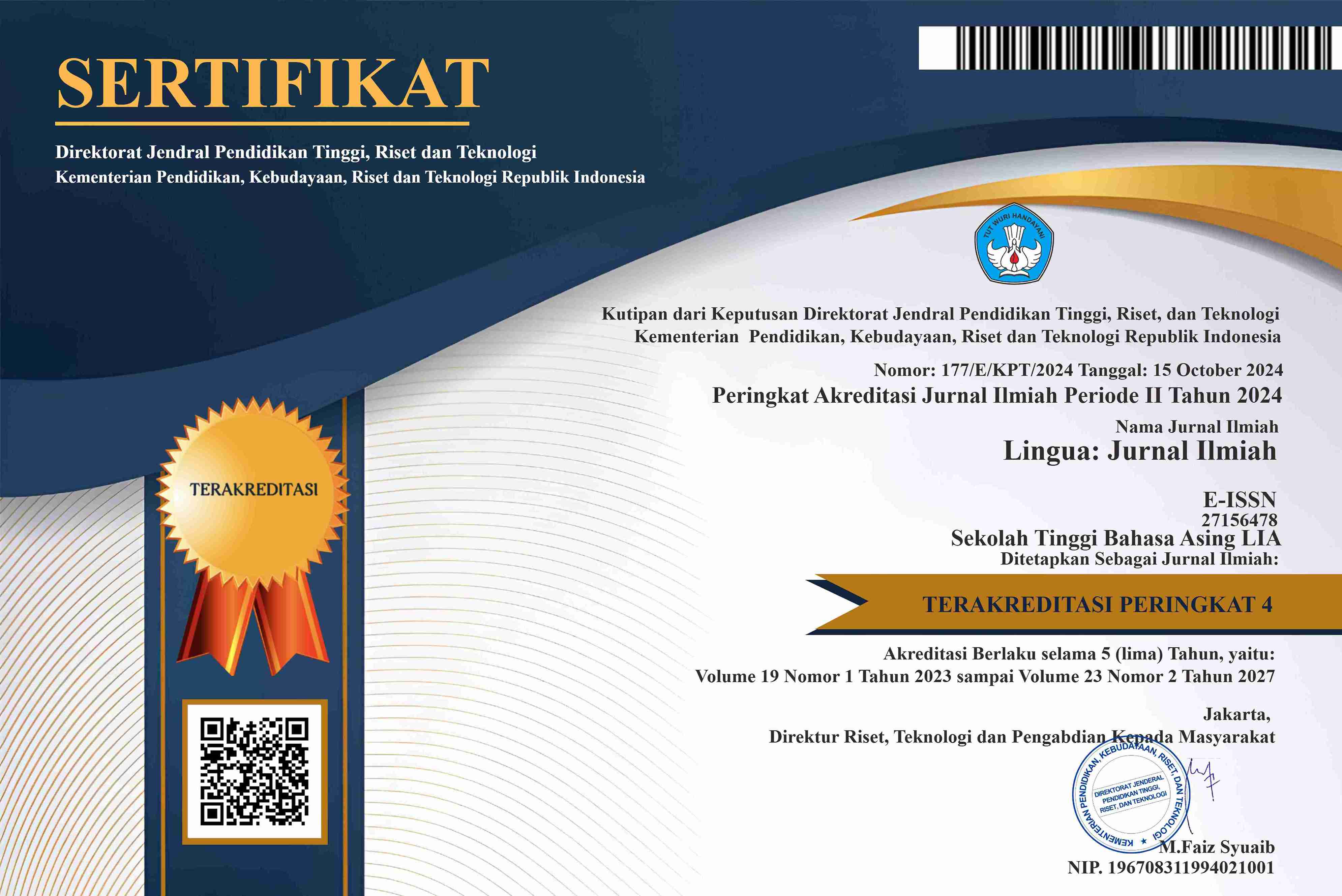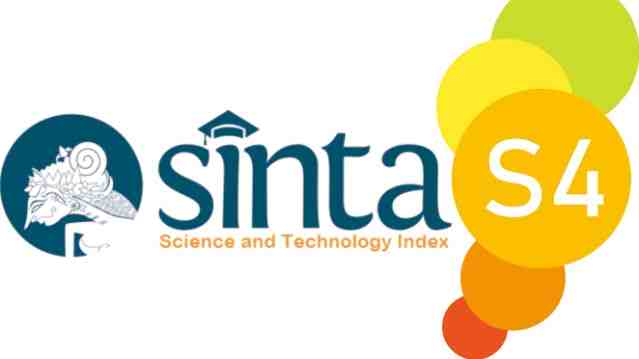Author Guideline
General Submission Requirements
- Manuscripts should contain between 5,000 and 7,000 words, excluding the abstract, references, author biodata, and appendices. Submissions outside this range will not be reviewed.
- Each manuscript must include:
- An abstract of 150 to 250 words, along with three to five keywords.
- For manuscripts in Indonesian, titles and abstracts in English must be provided with identical content.
- Manuscripts should be submitted in both Word (.docx) and PDF (.pdf) formats.
- To ensure a blind peer review, author names must not appear anywhere in the manuscript or file name. Author details, including names, positions, and institutional affiliations, should be submitted as a separate document. The corresponding author should be clearly designated.
- Authors are responsible for ensuring the language accuracy of their manuscripts, as the editorial board does not offer language editing services. Submissions involving more than five authors will be rejected.
- Only original manuscripts not under consideration elsewhere are accepted. Authors must declare this during submission. Multiple submissions by the same author in consecutive issues are prohibited, even for co-authored works.
- The editorial team may edit accepted manuscripts for clarity and style. Adherence to these guidelines is mandatory; otherwise, submissions will not be considered.
- The editorial board has the final say on manuscript acceptance, and any instances of plagiarism may result in a publication ban and non-refundable fees.
Article Processing Charges (APC)
- Indonesian Authors: IDR 400,000
- International Authors: Free
Submission Preparation Checklist
Authors must confirm compliance with the following points during submission:
- Read and understand the Author Guidelines.
- Ensure the manuscript is original, unpublished, and free from plagiarism and use of AI.
- Attach an author's submission statement .
- Prepare the manuscript using a word processor (DOC/DOCX format) within a 1 MB file size limit.
- Manuscripts should use Times New Roman 12-point font, single spacing, and A4 paper with 3 cm margins. Titles must be in 14-point bold font.
- Manuscript length must be between 5,000 and 7,000 words, with a maximum of 20 pages.
- References must follow the APA 7th edition format, with a minimum of 15 references (80% from scholarly journals). Click here for the guidance to the referencing and citation.
- Reference management tools like Mendeley are required.
- Similarity check by Turnitin must not exceed 20%.
- Agree to pay publication fees as specified.
- Acknowledge that non-compliance with guidelines can result in rejection.
- Commit not to withdraw the manuscript post-acceptance and agree to pay the APC if withdrawn.
Publication Process and Timeline
Manuscripts typically take 4 to 20 weeks for a status update. Accepted papers are issued a Letter of Acceptance (LoA) after submission of necessary documents.
Writing Guidelines
- Authors are required to use either Indonesian or American English and adhere to the provided format when writing their manuscripts.
- For manuscripts written in Indonesian, the title must be presented in Indonesian followed by an English translation. Conversely, for manuscripts written in English, the title must be in English followed by an Indonesian translation.
- Author identification should comply with the following guidelines: names must be written in full, without abbreviations or academic titles. The order begins with the first author, followed by the second, third, and subsequent authors without any connecting symbols. The authors' country of origin and correspondence address must be stated below their names. If there are multiple authors from different institutions, Arabic numerals (1, 2, 3, etc.) should be used to indicate affiliations. One author must be designated for email correspondence, and an Orcid ID is mandatory.
- ABSTRACTS (ABSTRAK) must be written in both Indonesian and English, with a length of 150–250 words. The abstract should include (1) the purpose, (2) the methodology, and (3) the findings of the study, without using abbreviations or citations. Keywords, consisting of 3–5 words/phrases, must follow the abstract, separated by semicolons, and concluded with a period. Abstracts in English must adhere to American English conventions.
- The INTRODUCTION (PENDAHULUAN) should provide the research background, explaining the phenomenon under investigation with support from recent references (published within the last 10 years) and prior related research by the author or others. It should contextualize the research as part of the existing body of knowledge (state of the art). This section should also include the research problem (ideally one specific problem), objectives, and theoretical framework used to address the issue. Subheadings should not be used in the introduction, and the content should not exceed 20% of the entire manuscript body.
- The METHOD (METODE) section should clearly and thoroughly describe the research methods, including the specific steps taken during the study. This section should occupy a maximum of 10% of the manuscript body (typically half to one page, depending on the total manuscript length). Subheadings are not necessary; the methodology can be presented in paragraph form.
- The RESULTS AND DISCUSSION (HASIL DAN PEMBAHASAN) section should explain the research findings and the issues addressed in the study. It can be divided into subsections, occupying up to 65% of the manuscript. This section should integrate "research findings" and "discussion" into a cohesive narrative rather than presenting them as separate parts.
- The CONCLUSION (SIMPULAN) should provide answers to the research problem and objectives outlined in the introduction. It may include recommendations or suggestions if applicable, though this is not mandatory. This section should not exceed 5% of the manuscript body.
- ACKNOWLEDGMENTS (if any) section must acknowledge any sources of funding that supported the research and may acknowledge the outside reviewers of their drafts.
- The REFERENCES (DAFTAR REFRENSI) must include at least 15 sources. No more than four sources should come from books or book chapters unless these sources are research objects, such as poetry collections, drama scripts, short story collections, or novels, which are exempt from this limitation. References must be primary sources, such as research findings, theories, or concepts published in journal articles or conference proceedings. References should have been published within the last 10 years, except for classic works used in historical studies.
- Authors submitting manuscripts to Lingua: Jurnal Ilmiah are required to cite at least two articles previously published in the journal. This rule aims to maintain the continuity of academic discussions and strengthen the relevance of submitted research within the journal's scholarly community. Authors are encouraged to carefully review past issues of Lingua: Jurnal Ilmiah to find relevant references that support their research.
- Authors must use the Mendeley reference manager for citations and references. Manual referencing is not allowed. References should follow the 7th edition of the APA style with single spacing.
- Tables and figures must conform to the rules outlined in the provided template.
Decision Categories
- Declined: Not suitable for publication; resubmission not allowed.
- Resubmit: Requires significant revision but has potential.
- Revision: Modifications requested with a 2–4 week revision deadline.
- Accepted: Ready for publication after minor revisions.
Adherence to these guidelines ensures a smoother submission and publication process for contributors to LINGUA: Jurnal Ilmiah.











